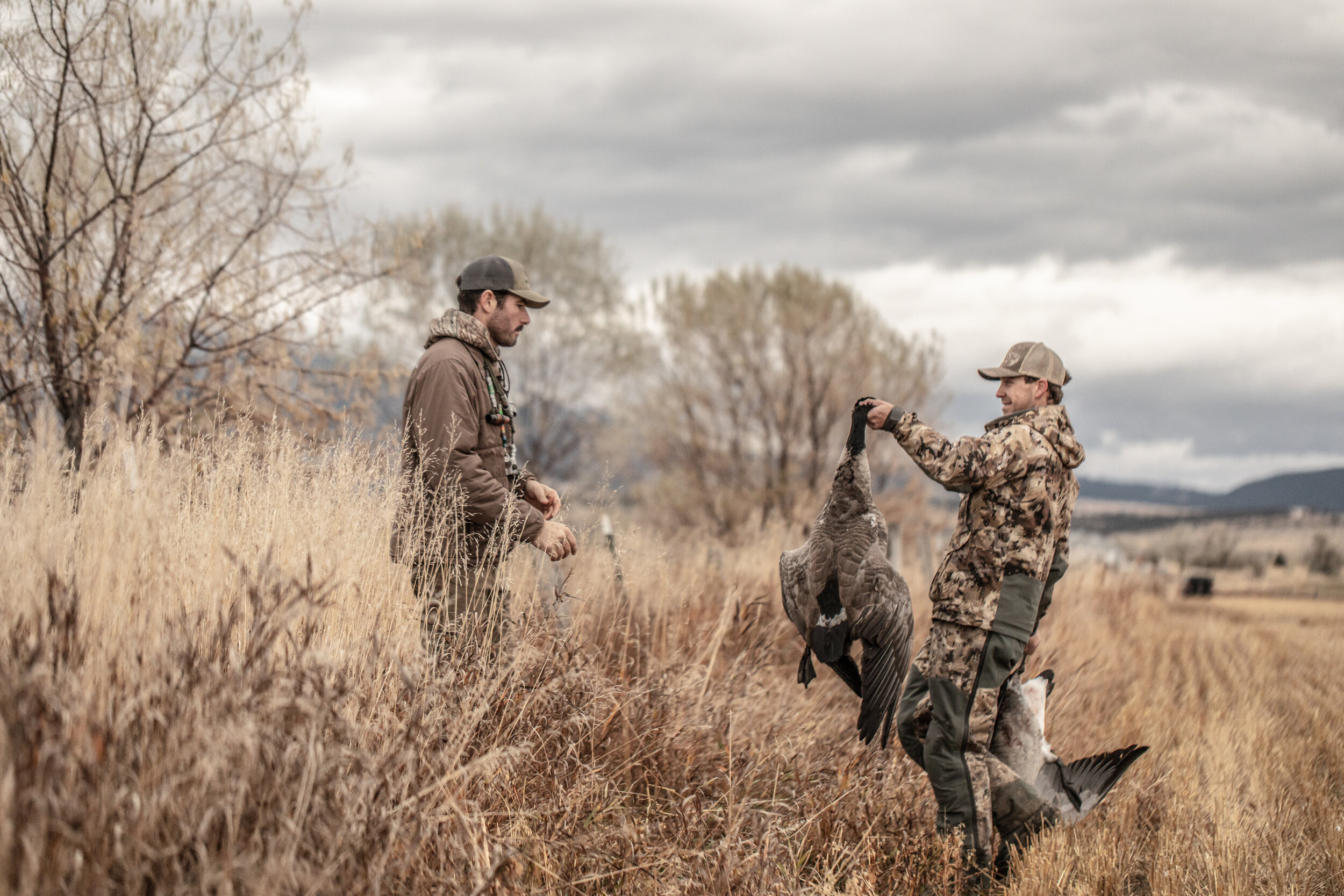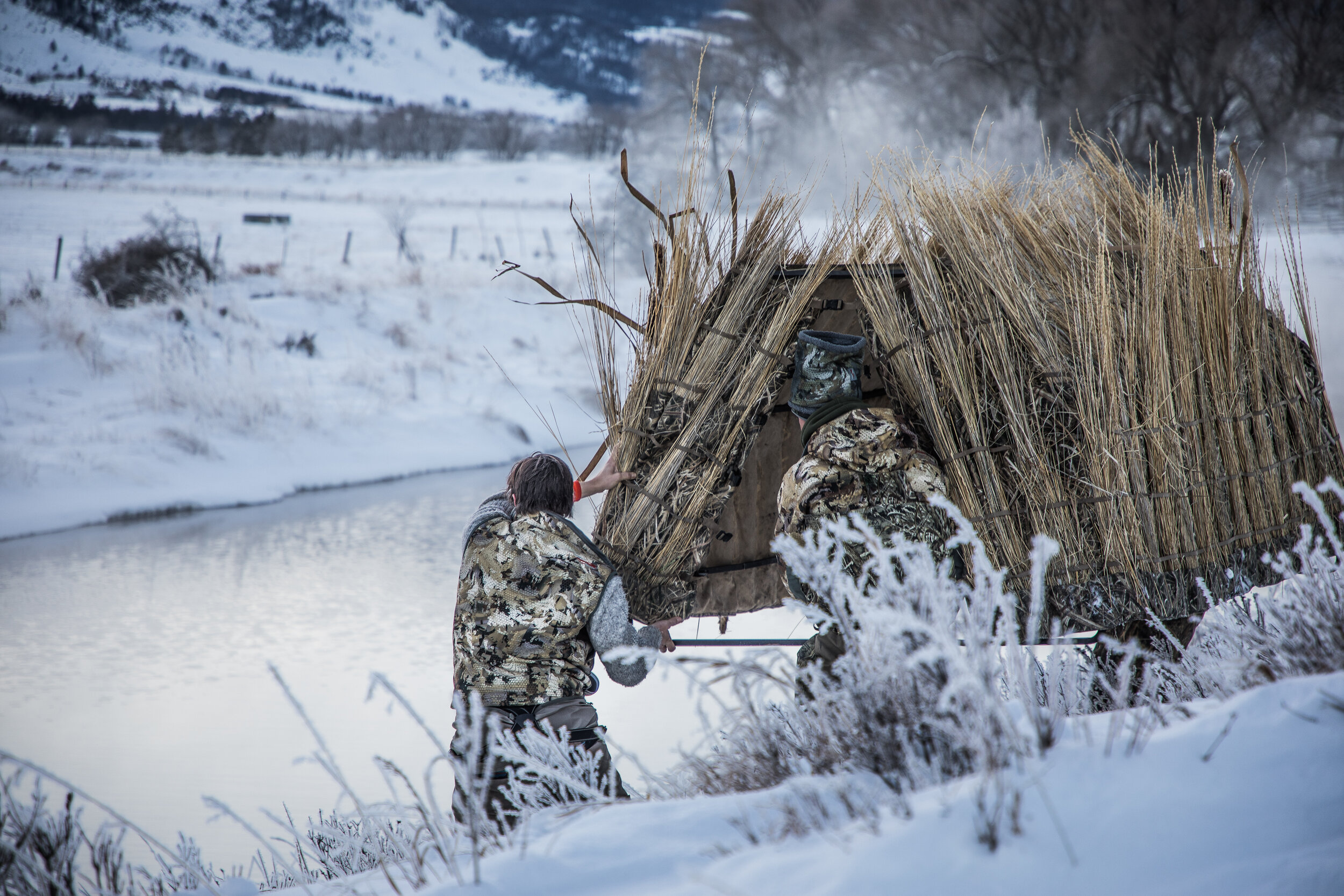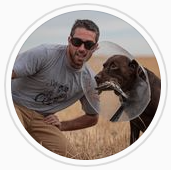Helpful Things to Bring to the Blind
Corey Mulhair at SPLIT REED
When you first started hunting, you were likely either bringing too much or not enough ‘stuff’ to make your hunt as easy and efficient as possible. Over your graduations from novice to amateur to experienced waterfowler, you’ve learned some things. As your experiences amassed and the hours spent in the blind turned to days and accumulated into weeks and months worth of time, you refined your systems.
You picked up tips and tricks along the way to make your overall blind experience better. These tips ranged from how to position your blinds or decoys, how to call and when to not, and even how to get rid of a group of cows that won’t leave your decoy spread alone. Well, here are a few things to bring to the blind that you might not have thought about, and why they can help make your overall hunting experience a little better, without being much of an added hassle.
Rake
Stubble collection made easy.
Three words. Pea. Field. Mallards. Let me tell you; that hunt needs to be on your bucket list. Freelancing any of North Dakota, Montana, Alberta, Saskatchewan, or Manitoba will bring with that journey the chance to hunt some serious duck-crack. Pea fields are amazing for ducks and geese. The nature of a pea crop lends to the seeds (yellow or green peas) shattering (the shell of the peas coming apart), both before and during harvest. The combines blow a few out the back, too. Because of that, you tend to find them all over the ground in pea fields come August once they’ve been cut and hauled off to the elevator. Ducks and geese absolutely love pea fields both early and late season, making them a place a guy should be scouting all season long.
The thing is, farmers often cut peas to the deck, as little as 2” of stubble sometimes. Peas dry down in relation to the moisture in the soil, so to speed that up and have an evenly ripened field to combine, farmers will desiccate or burn down (no, not with fire) the fields ahead of harvest. This often leaves tracks where the crop was driven over and laid flat by the sprayer a week before harvest, and oftentimes parts of those laid down peas will not have been able to have been picked up by the combine header. This makes for easy collection of stubble to brush a blind with! Otherwise, you may have to head to a field edge, or a slough edge to find stubble. Rakes just make it that much easier to gather up a huge pile of pea stubble to use for your hide.
The point here though is not limited to peas. Having a rake is great in grain fields as well. I am particularly fond of collecting corn husks with a rake in a grain cornfield to fill in the loops on layout blinds to help keep stalks in place and really conceal the entire blind. Instead of grabbing handfuls of stuff at a time, just rake it all together. Work smarter, not harder! Wheat and barley fields have the same laid down rows as peas in some areas (burndown with glyphosate in the Dakotas) and those full-length plants are nice to brush a layout with.
Binoculars
I’ve heard people give guys crap for having binos in the blind. I don’t understand why it would matter to them what someone else brings in their blind bag (as long as it isn’t shiny and obvious or makes too much noise), but some guys just like to give other people shit; that’s the kind of guys they are. Regardless of anyone's feelings, I carry my field glasses with me on every hunt, no matter the type or location. Waterfowl is certainly no exception.
I’ve found I’m just more likely to be happy about having brought them than upset that I did. I like to see if those strings of birds 3 miles away are coming or going. When they’re on a line that isn’t the one I want, I’ll coordinate flagging in the group to pull them onto the line I want them to be on. It’s really effective both on a feed hunt or a hunt where you’re breaking down migrators. I can’t see as well as I used to and it helps for me to know exactly what is coming before it gets to me. Aside from that, it’s nice to be able to glass up a buck on the other end of the field and see what it is- something my naked eyes aren’t very good at anymore.
If we are hunting in an area where we can see near the roost, from a mile or so away, it’s very nice to be able to keep an eye on that general area and check to see if birds are getting up and heading to feed- especially on windy days where you may not hear them.
So when you pull into the field to get the decoys and the layouts set up, lay a pair of 10x42’s down in the blind next to your shotgun and you’ll probably not be mad that you did. That being said, if you don’t already have binos in your pickup for scouting purposes anyways, you’re probably not trying very hard.
Trash Bag(s)
Man, it’s really an easy thing to bring, a trash bag or two. They take up no space and weigh nothing, and if you don’t already have some in your rig you might want to think about keep some in there for hunting and general purposes, too.
I use trash bags to empty out everyone’s blinds of crap like empty water bottles, shell boxes, and snack wrappers, as well as of course the rainbow-colored assortment of shells that will be in and around the blinds at the end of a good hunt. As hunters, we owe it to whatever setting we find ourselves in to leave it better than we found it. I’m not saying you need to pull weeds in that cornfield you have permission on, but let’s try and pick up all the empty hulls and spent wads we can before we leave that farmer’s field.
Before trash bags, I would simply accumulate pounds of crap inside the feet of my layouts on hunts, and a bunch of that would end up in the box of my pickup. It’s simple. To make cleanup easier, throw stuff in the layouts (or in a bucket) as the hunt goes on, and at the end of the hunt throw all of that trash that has accumulated in the blinds into trash bags. Keep the trash bag in the pickup until the hunting trip is over, and throw it away when you get home or stop at a gas station for fuel once it’s filled up or once you are done with the hunt.
Extra Socks / Gloves
Well, the socks are usually for me, but the gloves are often for someone who thought they were tougher than the 4-degree weather we were hunting in. I find that on a hunt if my socks get wet, I’m a miserable prick. And no one likes a miserable prick. So I usually bring with me (if not into the blind, at least in my pickup) a pair of extra socks. It’s not as common for me to need them, but I’m sure glad to have them when it is time to pull them out and throw ‘em on.
As far as the gloves go, I’ll sometimes have three pairs with me. Usually a pair of lightweight gloves and a couple of pairs of medium gloves. I run heavy-duty cold weather stuff (mittens) instead of the medium pair when it’s shitty cold (below 20 degrees or around there with some wind). Medium gloves are fine otherwise (IMO), as most of the time my hands are in warm jacket pockets or under my Carhartt bibs in my jean pockets. I wear one light fingerless pair and a medium-weight fleece-lined work glove over that fingerless pair. I like to have a backup of the med-weight in case my first pair gets wet from snow or rain, or in case someone forgot about how cold that snowy late-season February cornfield honker hunt was going to be.
Don’t misinterpret this, I’m not saying everyone needs to head to the blind with three pairs of gloves- but sometimes it’s necessary to have extra stuff that keeps you warm. Just remember- the guy who you let borrow your gloves, well he owes you a burger that afternoon from the little cafe y’all like to go eat and bullshit about the hunt at once it’s over.
Gun Parts
Without naming makes or models, I will tell you that four (4) times in the last decade I’ve been on a hunt and had issues with the internal mechanisms of shotguns failing and ending a hunt. Good hunts, too. It’s usual wear-and-tear stuff, nothing too surprising to be honest, but it’s been a few years since I’ve last had it happen so I guess I’m due. Firing pins have snapped in half, gas tubes in the stock have broken at the back of the receiver, charging handles have been lost, and the little thing that holds shells in the tube has gone to shit making my gun a single-shot autoloader. There has been a myriad of issues.
Don’t get me wrong, I know it could be much worse. Many folks have had a whole lot more incidences of issues in the field but the thing is, a few of these problems could have been remedied in the field with just a few extra parts and some patience. These days I have an extra shotgun or even two extras with me on any hunt- they’re just really not that tough to throw in the vehicle. But I do know that not everyone has more than one scattergun, so to them (and even those who do!) I suggest going online and spending $50 to get an assortment of extra parts for their shotgun to have on hand. Buy an extra firing pin or two, a few extra trigger assembly springs, gas tube, gas tube spring, charging handle, and even an extra bead (I lose a bed every couple of years it seems).
You should have them on hand, or at the very least in your pickup or gun case when you go on a hunt or hunting trip so you can fix it in the field or at the lodge/hotel. That way you aren’t entirely SOL if/when it happens. On top of this- bring some gun lube and some solvent to the blind too if you can. You never know when you, your buddy, a guest, or a client may need a squirt or two of either.
For more Split Reed Original Content - visit the Content Center here!




